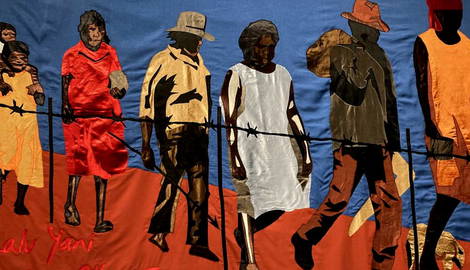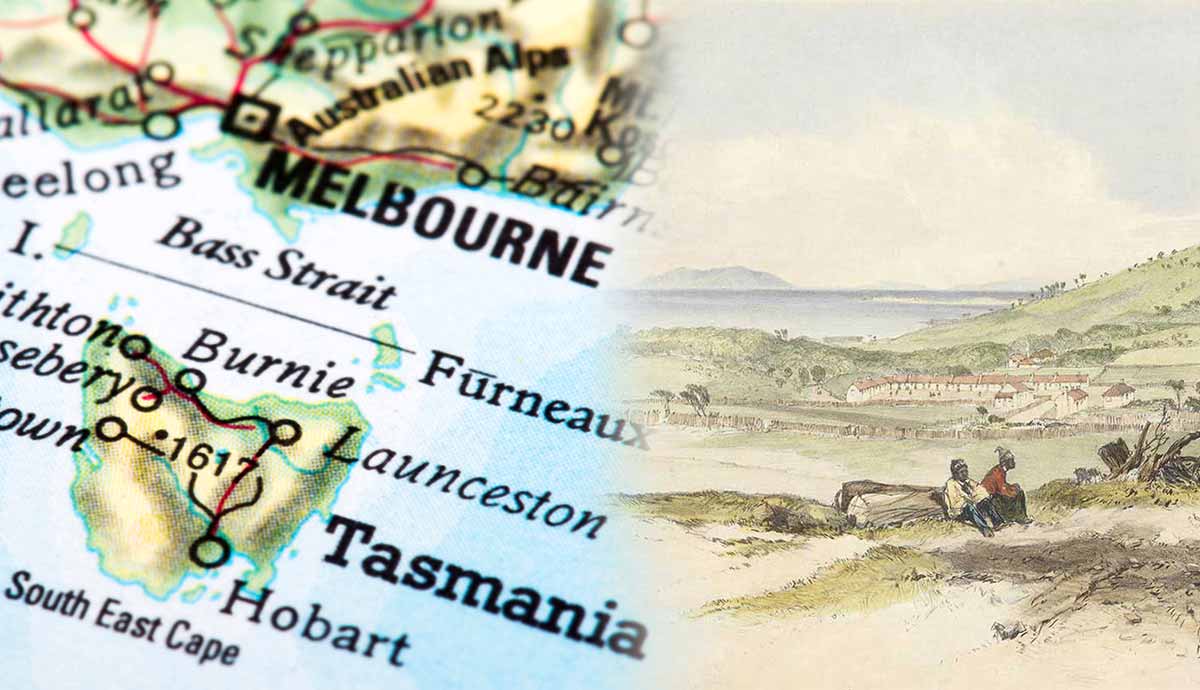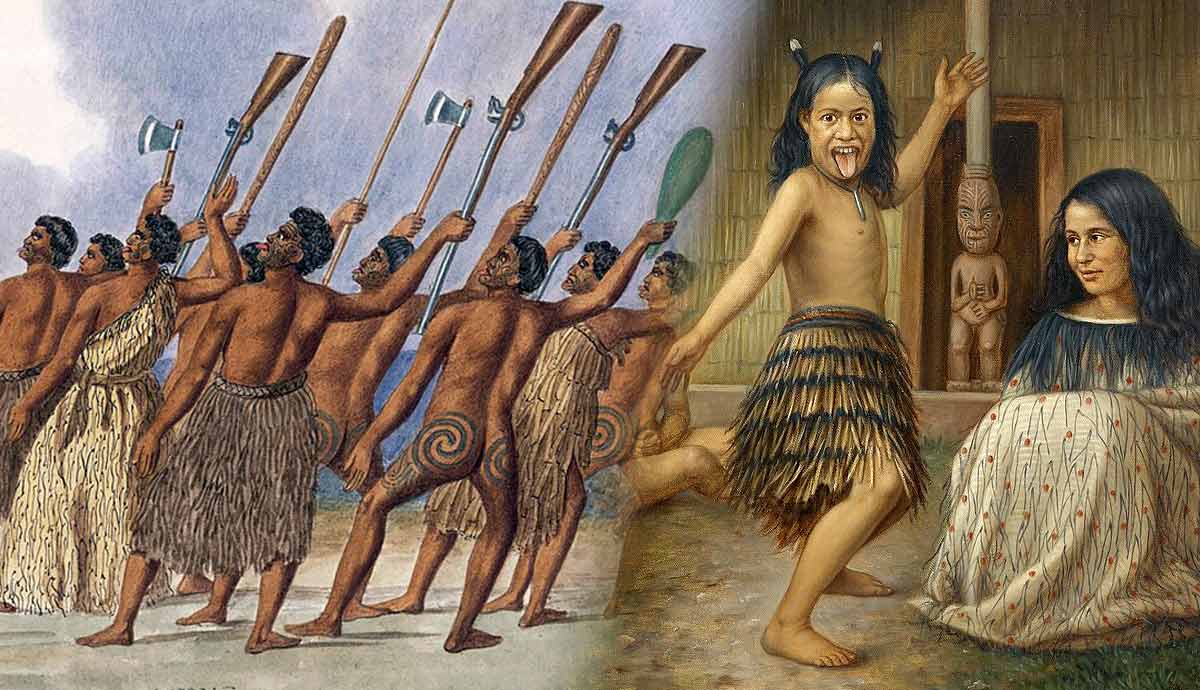
The 1988 Australian Bicentenary marked 200 years since the arrival of the First Fleet in the area now known as Sydney. It also marked 200 years from the first official contact between indigenous people and Europeans. In 1788, Aboriginal people had been managing and living on the Australian continent from time immemorial. Their knowledge of the continent was deep and ancestral. Beginning in 1788, British settlers and explorers gradually stole away their lands, dispossessed them, and attempted to assimilate them into white Australian society. This process was slowly reversed in the 1960s with the birth and affirmation of the Aboriginal Land Rights Movement. Slowly but steadily, without resorting to violence, indigenous groups across Australia have set an example to the whole world.
The Gurindji People Go On Strike

Connection to land is more than just an ideological stance for indigenous Australians. They are not the owners of the land, but its custodians. For example — since time immemorial, the Gurindji people have lived on the area now known as Victoria River, in the Northern Territory, southwest of Katherine.
In 1883, without signing any treaties with the Gurindji, the colonial government handed over almost 3,000 square kilometers (1158 miles) of this vast area to Nathaniel Buchanan, an Irish-born pastoralist and explorer. One year later, he had 1,000 cattle move onto the land. Little did he know that in doing so he was disrupting the delicate land management balance that had allowed indigenous people to thrive there for millennia. Many Aboriginal men and women decided to stay, working as stockmen, stockwomen, and domestics first for Buchanan and then for the Vestey Brothers, the meat-packing company the Buchanan family sold Wave Hill station to in 1914.

Aboriginal workers represented a huge pool of cheap labor. Here like elsewhere, their contribution to the growth of the cattle industry has been invaluable. But living conditions were poor, and wages extremely low, if not non-existent.
On August 23, 1966, the strike began; it would go down in history as the Wave Hill Walk-Off. The Gurindji people, led by Vincent Lingiari, walked off Wave Hill Station, demanding equal pay with other stockmen. Above all, they wanted to regain possession of their ancestors’ lands.
After months of (failed) consultations, in April 1967 they moved their camp to Daguragu, also known as Wattie Creek, a floodplain on a tributary of the Victoria River. In a petition to Governor-General Lord Casey, they asked him to grant them a lease of 1,300 square kilometers (502 miles) around the creek as both a mining and cattle lease. The governor refused.

According to the Australian legal system, the Gurindji were illegally occupying land leased to the Vestey Brothers. They didn’t bend and the strike lasted seven years. Everything changed in 1972 when the Labor Party came to power and Gough Whitlam became Australia’s 21st Prime Minister. On August 16, 1975, Whitlam transferred the leasehold title to the Gurindji people.
After symbolically pouring a handful of red soil into Vincent Lingiari’s hand, he said: “Vincent Lingiari, I solemnly hand to you these deeds as proof, in Australian law, that these lands belong to the Gurindji people, and I put into your hands part of the earth itself as a sign that this land will be the possession of you and your children forever.” Lingiari replied: “Let us live happily together as mates, let us not make it hard for each other…” One year later, the Aboriginal Land Rights (Northern Territory) Act 1976, was passed.

54 years later, in September 2020, native title to Wave Hill Station was granted to the Gurindji people. The Gurindji strike, peaceful as it was, had received support from activists outside the Gurindji community, from the Socialist Party of Australia to the Communist Party of Australia, from Wiradjuri woman and humanitarian activist Shirley Coleen Smith (1924-1998), better known as Mum Shirl, to anthropologist and photographer Hannah Middleton. Decades later, Aboriginal and Torres Strait Islanders marched alongside non-Indigenous Australians to protest the celebrations for the Australian Bicentenary. January 26, 1988, was first and foremost a day of protests, and the culmination of years of petitions, conferences, strikes, and rallies. Lingiari died exactly that year, on the now Indigenous-owned land of his ancestors.
Eddie Mabo Goes to Court

Aboriginal activist Marcia Langton (who was also one of the key negotiators of the Wik case in 1996) remembers that in the aftermath of the 1982 Mabo case “there were predictions that the Australian title system and our legal system were under threat. The hysteria was unbelievable.” But what was the so-called Mabo case?
From time immemorial, Mer has been home to the Meriam people. This tiny island is the most eastern of the islands in the Torres Strait, and it was renamed Murray Island by Captain Edwards of the HMS Pandora in 1791. The Queensland Government annexed it, along with the islands of Boigu, Erub, and Saibai, with the Queensland Coast Islands Act 1879. Little more than a hundred years later, a group of Meriam People decided to challenge the Australian legal system by bringing an action against the State of Queensland and the Commonwealth of Australia.

The leader of the group, and the man who was to become the face of the so-called Mabo Case, was Eddie Koiki Mabo (1936-1992), born in the village of Las on the Island of Mer. On May 20, 1982, along with three other Meriam men and one Meriam woman, he lodged a case with the High Court of Australia against the State of Queensland and the Commonwealth of Australia, claiming legal ownership of Mer, the land of his ancestors.
On June 3, 1992, exactly ten years after the case was first presented, six of the seven judges of the High Court ruled that the Meriam people were entitled “in accordance with their laws or customs, to their traditional lands and that, subject to the effect of some particular Crown leases, the land entitlement of the Murray Islanders in accordance with their laws or customs is preserved, as native title, under the law of Queensland.”

The decision was groundbreaking in that it altered the very basis of land law in Australia. The longstanding concept of terra nullius, the assumption that Aboriginal and Torres Strait Islanders had no concept of land ownership before the arrival of the British settlers and that they were unable to properly use the land, had finally been declared a fiction.
The decision recognized that the rights and interests in the waters, lands, and islands of Aboriginal and Torres Strait Islanders, the original inhabitants of the continent, continued to exist despite settlement. The High Court decision, therefore, guaranteed the protection of Australian law to indigenous peoples, not only to the Mer, but to numerous groups around Australia. The Mabo decision also led to the passing of the Native Title Act 1993.

The Bill defines native title as the right (and interests) to land and waters possessed by Aboriginal and Torres Strait Islanders according to their traditional customs and laws, and it comes in two forms: exclusive rights and non-exclusive rights.
While exclusive native title grants Aboriginals the possession of a specific area to the exclusion of all other parties, be it a family or an international company, non-exclusive native title rights apply when there is a shared interest with another party (with pastoral or mining leases for instance). The Bill also established the National Native Title Tribunal, to assist Indigenous peoples in drafting their applications and handling the evidence claimants are supposed to provide in order to file their claim and to prove their continuous and unbroken connection to their ancestors’ country.

As provided for by the Bill, whenever native title holders feel that their rights and interests have been damaged or diminished by their coexistence with other leases, they can ask for compensation. This brings us to another crucial moment in the history of the Aboriginal Land Rights Movement — the 1996 Wik case.
When the Wik People Fought the Law (and Won)

In the Aboriginal language of the Wik peoples, wik means “speech” or “language.” From time immemorial, they have lived and thrived in the area around the Archer and Eward rivers, on the western Cape York Peninsula. In 1993, together with the Thayorre people, they claimed native title rights over two large areas, known as “Holroyd River Holding” and the “Michellton Pastoral Leases.”
These areas included various pastoral leases and two mining leases, however, they claimed that their native title rights had not been extinguished by the granting of various leases over the land. Their native title rights had, in fact, survived them. The Wik’s claim was the direct successor to the Mabo case, but while the Mabo decision was limited to a small area, the lands of the Wik people were right within the orbits of mining and pastoralist interests.

The case ended up in the High Court, which was called to decide whether pastoral leases extinguish the rights of native title holders, that is, whether a native title could coexist with other leases. On December 23, 1996, it was decided that yes, it could. A pastoral lease, the Court decided, does not automatically substitute nor extinguish native title rights, just as it doesn’t grant rights of exclusive possession on the pastoralist and leaseholder.
The Wik Peoples v. Queensland (also known as the “Pastoral Leases case”) was met with widespread hysteria. The government, led by John Howard, responded with the Wik 10-point plan which severely watered down the High Court decision. It stated, among other things, that native title can coexist with the rights of a pastoralist only if there is no conflict between the pastoralists and the native title holders. In the case of a conflict of rights, the native title holders must yield. In other words, Aboriginal rights must come second.

Nonetheless, the Wik case was a crucial moment in the history of Aboriginal activism. It brought the communities of the Cape York peninsula together, putting Aboriginal women at the forefront of the political battle for land rights. The famous picture of Gladys Tybingoompa celebrating, dancing, and singing, outside the High Court, is more than just symbolic: it is a truthful representation of what happened in the months leading up to December 23, 1996, as Aboriginal women from remote communities actively engaged in the fight.
Aboriginal filmmaker Dean Gibson, the director of the 2018 feature documentary Wik vs Queensland, has stated that the whole case came down to Aboriginal people saying “we know that you are here, miners and farmers, you are part of the landscape, but as Aboriginal people we can’t just be stomped on, we need to have an equal and prominent seat at that table.”
Timber Creek: Compensation for Spiritual Loss

The Timber Creek Compensation Case, officially known as the Griffiths v. Northern Territory case, has been hailed as one of the most significant events in the land rights movement since the Wik and Mabo cases. The High Court decision, which marks the end of an eight-year-long legal battle, was the first to recognize the existence and value of Aboriginal culture, finally putting it at the forefront of the struggle for land rights.
Makalamayi, known to non-indigenous peoples as Timber Creek, is located 285 kilometers (177 miles) west of Katherine in the Northern Territory and it has long been the home of the Ngaliwurru and Nungali peoples. In 2006, they finally won native title rights to the area. Such rights were, however, non-exclusive. As mentioned above, under the native title system, non-exclusive native title rights can be “extinguished” by the government whenever they clash with national interests.

This means, essentially, that roads can be built over Aboriginal sacred sites if needed and that mining companies can disrupt and destroy ancient Aboriginal sites. That Aboriginal rights and culture always come second.
On March 13, 2019, the High Court of Australia awarded a total of $3.3 million in compensation to the Ngaliwurru and Nungali peoples (later decreased to $2.9), of which $1.3 was awarded for cultural and spiritual loss alone. What makes the Timber Creek decision unique and groundbreaking is that it treated the spiritual aspect of the case distinctly from the more objective economic value of the land itself. It also stated that, given the highly personal and subjective nature of each group’s relation to the land, cultural loss needs to be evaluated on a case-by-case basis.

The Timber Creek case highlighted the “tension between national growth (…) and local and regional development for Indigenous land owners” discussed by Altman in his essay on what he describes as the “Indigenous land titling ‘revolution’ in Australia.” A tension that is likely to never be completely solved.
In Dean Gibson’s documentary about the Wik case, Wik vs Queensland, Stanley Ngakyunkwokka, one of the leaders of the case, says that Aboriginal Australians must learn to fight, “not to fight with fists but with our tongues,” not with violence but through dialogue “because everybody has their feelings for their land within their heart.” This is perhaps the greatest lesson that the Aboriginal Land Rights Movement can teach us all.










